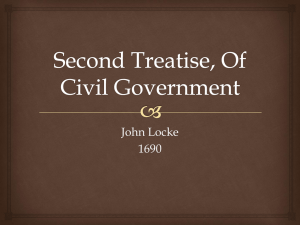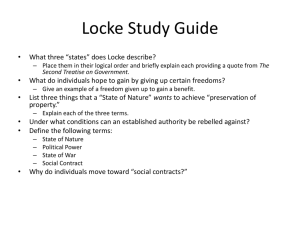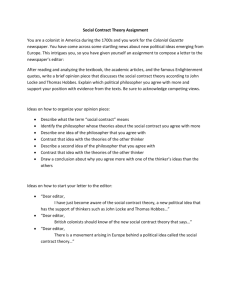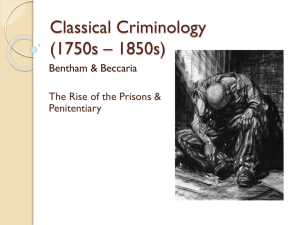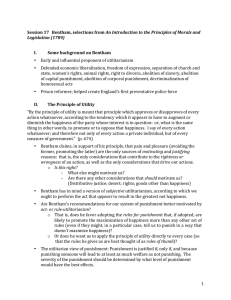Questions: Which Greek philosopher believed there was no such
advertisement
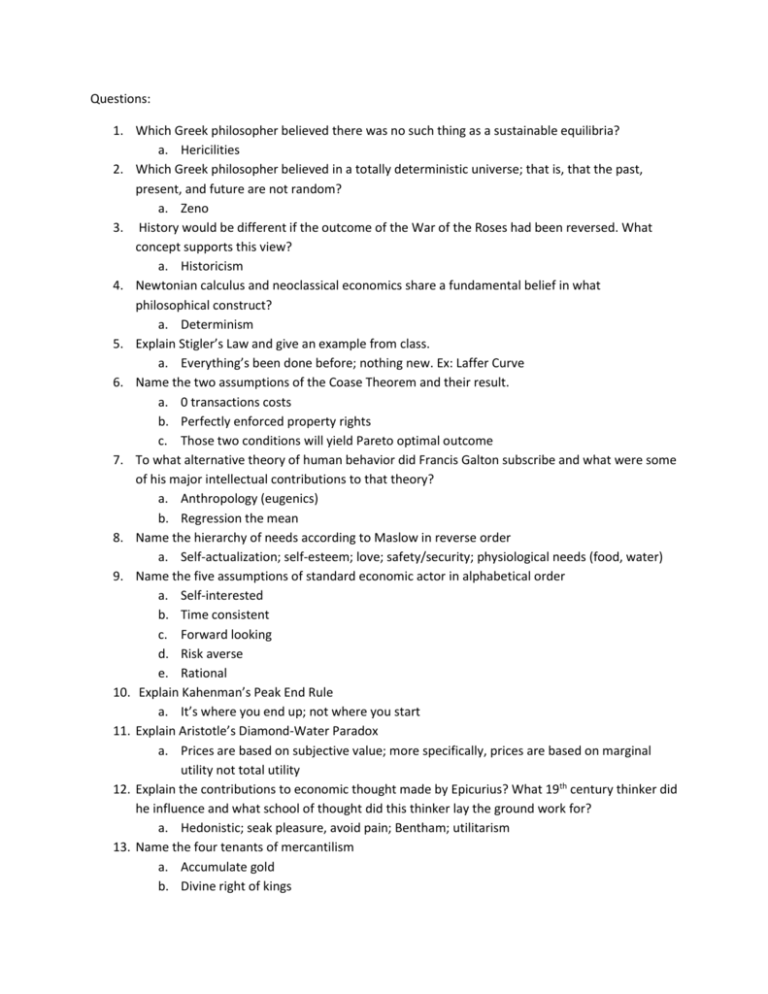
Questions: 1. Which Greek philosopher believed there was no such thing as a sustainable equilibria? a. Hericilities 2. Which Greek philosopher believed in a totally deterministic universe; that is, that the past, present, and future are not random? a. Zeno 3. History would be different if the outcome of the War of the Roses had been reversed. What concept supports this view? a. Historicism 4. Newtonian calculus and neoclassical economics share a fundamental belief in what philosophical construct? a. Determinism 5. Explain Stigler’s Law and give an example from class. a. Everything’s been done before; nothing new. Ex: Laffer Curve 6. Name the two assumptions of the Coase Theorem and their result. a. 0 transactions costs b. Perfectly enforced property rights c. Those two conditions will yield Pareto optimal outcome 7. To what alternative theory of human behavior did Francis Galton subscribe and what were some of his major intellectual contributions to that theory? a. Anthropology (eugenics) b. Regression the mean 8. Name the hierarchy of needs according to Maslow in reverse order a. Self-actualization; self-esteem; love; safety/security; physiological needs (food, water) 9. Name the five assumptions of standard economic actor in alphabetical order a. Self-interested b. Time consistent c. Forward looking d. Risk averse e. Rational 10. Explain Kahenman’s Peak End Rule a. It’s where you end up; not where you start 11. Explain Aristotle’s Diamond-Water Paradox a. Prices are based on subjective value; more specifically, prices are based on marginal utility not total utility 12. Explain the contributions to economic thought made by Epicurius? What 19th century thinker did he influence and what school of thought did this thinker lay the ground work for? a. Hedonistic; seak pleasure, avoid pain; Bentham; utilitarism 13. Name the four tenants of mercantilism a. Accumulate gold b. Divine right of kings c. Exports>imports d. Colonialism and imperialism 14. Name two economic theorists who supported empiricism and advocated for a government census a. Ghon Zong and Sir William Petty 15. Draw the circular model and name the economist credited with its invention. a. Quesnay b. 16. Describe the debate between Alexander Hamilton and Thomas Jefferson. a. Hamilton—the industrialist b. Jefferson—the phyisocrat (agriculturally based society) 17. What is the specie flow mechanism? How developed it? What equation did this lead to? What is the equation? a. States that more gold leads to an increase in domestic prices; this then changes the terms of trade for the recipient [“surplus”] nation. b. Hume c. Fisher equation: MV = PQ (or Cambridge equation: Md = yk) 18. Name 7 thinkers and briefly outline their perspective on property rights: (double points if you can name all 11) Plato Scholastics Hugo Grotius Thomas Hobbes John Locke Philosopher King The church Property rights arise from social consensus. That which society grants, society can take away. Leviathan = dictator/king governs in all matters to avoid a life that is “nasty, brutish, and short.”Property rights derived from government. -Social contract: we surrender rights to the state to escape a nasty existence. -Why is something yours? Because the government says so. -Top-down decision making Labor Theory of Value: Mixing labor with gifts of nature creates value and rights. According to Locke, all value derives from labor, including property rights. -Who owns land? The person who improves it. Supply side approach. Prices determined by labor cost where exit/entry prevents profit. Focus on David Hume Pierre-Joseph Proudhon Karl Marx Harold Demstez John Rawls Robert Nozick intrinsic prices. -Theory of pricing very consistent with Smith -Bit of quantity theory of money -More quantity theory of money post-Locke Property is theft and should be held by everyone. Condemns rent, interest, and profit as surplus values stolen from workers by capitalists. Capitalism is brute force. Property rights are necessary for market efficiency. The person who own property is the one who is most willing to exert force to control the property and use its resources. This leads to the owner of land being the one who will value it the most. Maximizing personal utility would lead to a fair society if the individual who designs society does so behind a veil of ignorance, not knowing in advance the position in society where he might land. 9/10 of property rights are from the law. Society should maintain the status quo unless the individual arguing against it can prove entitlement. Must prove entitlement because of an earlier legit claim to property that was wrongly taken. -Dismissed Locke’s theory of value. Would an explorer who poured his blood into the Pacific Ocean own the ocean? 19. According to Malthus, name 2 positive and 2 preventative checks on population growth. ID which he could consider moral and immoral a. Positive: war, disease, famine b. Preventative: birth control (immoral) and abstinence (moral) 20. Draw Ricardo’s demand (and accompanying supply) curve for labor and explain its relationship to the fixed wages fund. What type of graph results? a. b. Rectangular hyperbole (rectangle on any point of the graph is of same area) 21. Name von Thunnen’s contribution to economic thought. a. Location, location, location 22. Name the 3 primary thinkers we’ve discussed who made contributions to theories on crime and punishment. What were they? a. Bentham: Punishment should fit the crime b. Chadwick: Criminal weigh the probability of receiving a severe punishment before committing their crime c. Becker: Contrary to Bentham, Becker concluded that the punishment should be set so that punishment equals damage × [1/(probability of being apprehended and punished.)] 23. JS Mill discussed 2 types of taxes. Tells us what 2 types he discussed, which he favored, and why a. Income tax (no, would distort incentive to work) b. Inheritance tax: favored (b/c they’re dead) 24. List Marx’s 6 stages of economic development a. Prehistory, primitive culture, feudalism, capitalism, dictatorship of the proletariat, communism Final question: Demonstrate graphically how a monopolist makes profit in the long run. Include a demand curve and a marginal cost curve and any other necessary curves. Show profit, dead weight loss, and compare the monopolist’s production point to the production point in perfect competition and use your graph to explain why a monopoly is inefficient.
